- Clone
- 3.3 (See other available formats)
- Regulatory Status
- RUO
- Other Names
- Tactile (T cell-activated increased late expression)
- Isotype
- Rat IgG1, κ
- Ave. Rating
- Submit a Review
- Product Citations
- publications

-

C57BL/6 splenocytes were stained with CD3 PE and CD96 (clone 3.3) APC (top) or rat IgG1, κ APC isotype control (bottom). -

| Cat # | Size | Price | Save |
|---|---|---|---|
| 131711 | 25 µg | ¥32,780 | |
| 131712 | 100 µg | ¥77,000 |
CD96, also called Tactile is preferentially expressed on T cells and NK cells and may play a role in the adhesive interaction of activated T and NK cells to their target cells during late phase of immune response. It may also plays a role in antigen presentation and/or lymphocyte activation.
Product DetailsProduct Details
- Verified Reactivity
- Mouse
- Antibody Type
- Monoclonal
- Host Species
- Rat
- Formulation
- Phosphate-buffered solution, pH 7.2, containing 0.09% sodium azide.
- Preparation
- The antibody was purified by affinity chromatography and conjugated with APC under optimal conditions.
- Concentration
- 0.2 mg/ml
- Storage & Handling
- The antibody solution should be stored undiluted between 2°C and 8°C, and protected from prolonged exposure to light. Do not freeze.
- Application
-
FC - Quality tested
- Recommended Usage
-
Each lot of this antibody is quality control tested by immunofluorescent staining with flow cytometric analysis. For flow cytometric staining, the suggested use of this reagent is ≤0.5 µg per million cells in 100 µl volume. It is recommended that the reagent be titrated for optimal performance for each application.
- Excitation Laser
-
Red Laser (633 nm)
- Product Citations
-
- RRID
-
AB_2650740 (BioLegend Cat. No. 131711)
AB_2650741 (BioLegend Cat. No. 131712)
Antigen Details
- Structure
- Type 1 single chain membrane glycoprotein of 569 amino acids. Member of the Ig superfamily with three Ig domains and extensive glycosylation.
- Distribution
-
Positive on most peripheral T cells, NK cells and upregulated when activated.
- Ligand/Receptor
- CD155, nectin 1
- Cell Type
- NK cells, T cells
- Biology Area
- Immunology, Inhibitory Molecules
- Molecular Family
- Adhesion Molecules, CD Molecules
- Antigen References
-
1. Wang PL, et al. 1992. J Immunol. 148:2600-8.
- Gene ID
- 84544 View all products for this Gene ID
- UniProt
- View information about CD96 on UniProt.org
Related FAQs
Other Formats
View All CD96 Reagents Request Custom Conjugation| Description | Clone | Applications |
|---|---|---|
| PE anti-mouse CD96 (TACTILE) | 3.3 | FC |
| APC anti-mouse CD96 (TACTILE) | 3.3 | FC |
| Ultra-LEAF™ Purified anti-mouse CD96 (TACTILE) | 3.3 | FC,Block |
| TotalSeq™-A0906 anti-mouse CD96 (TACTILE) Antibody | 3.3 | PG |
| TotalSeq™-B0906 anti-mouse CD96 (TACTILE) | 3.3 | PG |
| TotalSeq™-C0906 anti-mouse CD96 (TACTILE) | 3.3 | PG |
Customers Also Purchased
Compare Data Across All Formats
This data display is provided for general comparisons between formats.
Your actual data may vary due to variations in samples, target cells, instruments and their settings, staining conditions, and other factors.
If you need assistance with selecting the best format contact our expert technical support team.
-
PE anti-mouse CD96 (TACTILE)
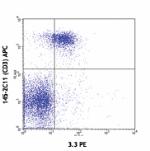
C57BL/6 splenocytes stained with 145-2C11 (CD3) APC and 3.3 ... -
APC anti-mouse CD96 (TACTILE)
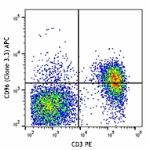
C57BL/6 splenocytes were stained with CD3 PE and CD96 (clone... 
-
Ultra-LEAF™ Purified anti-mouse CD96 (TACTILE)
-
TotalSeq™-A0906 anti-mouse CD96 (TACTILE) Antibody
-
TotalSeq™-B0906 anti-mouse CD96 (TACTILE)
-
TotalSeq™-C0906 anti-mouse CD96 (TACTILE)










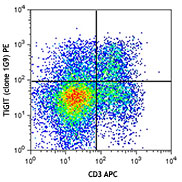
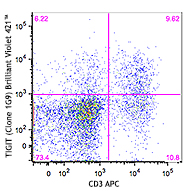
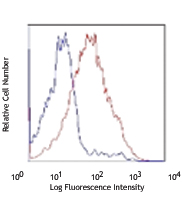
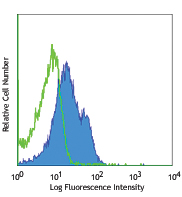



Follow Us